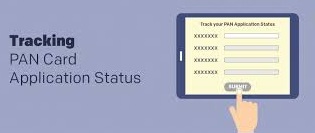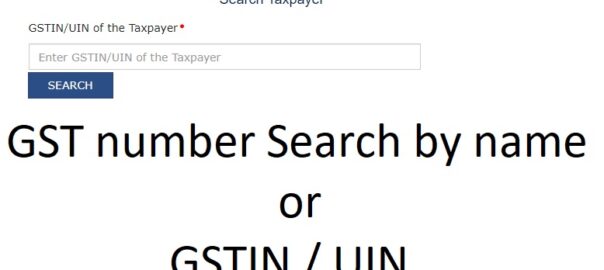Indexation
In simple terms indexation refers to technique to adjust income payments by means of a price index, in order to maintain the purchasing power of the public after inflation. To overcome the problem of inflation the concept of indexation was introduced.
For tax purposes indexation is the term used for arriving at the current actual cost. The purchasing power of money decreases with an increase in inflation which results in an increase in prices of goods. Indexed cost allows the assessee to claim a higher deduction in respect of the cost of the asset by taking inflated cost while calculating capital gains.
The overall cost of acquisition is adjusted per the prevailing Cost Inflation Index for the year and the year in which acquisition took place.
Calculation of Indexed Cost:
Firstly, calculate the cost of acquisition of the capital assets. Then,
|
Cost Inflation Index of the year in which Indexed Cost of acquisition = Cost of acquisition x asset is transferred_________________ Cost Inflation Index of the year in which asset is first held by assessee or CII of 2001-02, whichever is later |
Note: Cost inflation index is the index for the inflation rate in the country. Central Board of Direct Taxes (CBDT) issues this index every year.
Indexation can be done on the cost of improvement also in the same manner as the cost of acquisition. Any expense incurred on account of improvement before 01/04/2001 is to be completely ignored and only expense incurred after 01/04/2001 is to be considered for indexation as the cost of improvement before 01/04/2001 is already considered in fair market value.
|
Cost inflated index of the year in Indexed Cost of Improvement = Cost of Improvement x which expense incurred_______ Cost Inflation Index of the year in which asset is first held by assessee or CII of 2001-02, whichever is later |
Indexation benefit is available only for transfer of long term capital asset. Depreciable Assets are always deemed as short-term capital assets. Thus, no indexation benefits shall be available on such assets and where a non-resident acquires shares or debentures of an Indian company in foreign currency, the scheme of indexation does not apply.
No indexation benefit is available for slump sale.
Calculation of Fair market value:
1. Average price of similar properties in the same area
2. Based on the circle rates
3. Based on the Real estate Indices
4. Valuation from registered valuers.
Indexation table as per Income tax act, 1961:
Central Government specifies the cost inflation index by notifying in the official gazette.
Cost Inflation Index = 75% of the average rise in the Consumer Price Index* (urban) for the immediately preceding year.
*Consumer Price Index compares the current price of a basket of goods and services (which represent the economy) with the price of the same basket of goods and services in the previous year to calculate the increase in prices.
| Financial Year | Cost Inflation Index (CII) |
| 2019-20 | 289 |
| 2018-19 | 280 |
| 2017-18 | 272 |
| 2016-17 | 264 |
| 2015-16 | 254 |
| 2014-15 | 240 |
| 2013-14 | 220 |
| 2012-13 | 200 |
| 2011-12 | 184 |
| 2010-11 | 167 |
| 2009-10 | 148 |
| 2008-09 | 137 |
| 2007-08 | 129 |
| 2006-07 | 122 |
| 2005-06 | 117 |
| 2004-05 | 113 |
| 2003-04 | 109 |
| 2002-03 | 105 |
| 2001-02 | 100 |
| Any time before 1st April 2001 | 100 |
This above-stated indices will come into force with effect from the 1st day of April 2019 and will accordingly apply to the Assessment Year 2019-20 and subsequent years.
As the cost of indexation starts from 2001-02 than for the assets purchased before 01/04/2001 the fair market value of the assets as on 01/04/2001 shall be taken into account. The taxpayer shall be given the option to either take the fair market value as on 01/04/2001 as cost of acquisition or actual price as the cost of acquisition
For CII Calculator Visit: https://www.incometaxindia.gov.in/Pages/utilities/Cost-Inflation-Index.aspx
COST INFLATION INDEX (CII) APPLICABLE FOR FINANCIAL YEAR 2016-17 AND PRECEDING YEARS
| Financial Year | Cost Inflation Index (CII) |
| 2016-17 | 1125 |
| 2015-16 | 1081 |
| 2014-15 | 1024 |
| 2013-14 | 939 |
| 2012-13 | 852 |
| 2011-12 | 785 |
| 2010-11 | 711 |
| 2009-10 | 632 |
| 2008-09 | 582 |
| 2007-08 | 551 |
| 2006-07 | 519 |
| 2005-06 | 497 |
| 2004-05 | 480 |
| 2003-04 | 463 |
| 2002-03 | 447 |
| 2001-02 | 426 |
| 2000-01 | 406 |
| 1999-00 | 389 |
| 1998-99 | 351 |
| 1997-98 | 331 |
| 1996-97 | 305 |
| 1995-96 | 281 |
| 1994-95 | 259 |
| 1993-94 | 244 |
| 1992-93 | 223 |
| 1991-92 | 199 |
| 1990-91 | 182 |
| 1989-90 | 172 |
| 1988-89 | 161 |
| 1987-88 | 150 |
| 1986-87 | 140 |
| 1985-86 | 133 |
| 1984-85 | 125 |
| 1983-84 | 116 |
| 1982-83 | 109 |
| 1981-82 | 100 |
| Anytime before 1st April 1981 | 100 |
As the cost of indexation starts from 1981-82 than for the assets purchased before 01/04/1981 the fair market value of the assets as on 01/04/1981 shall be taken into account. The taxpayer shall be given the option to either take the fair market value as on 01/04/1981 as cost of acquisition or actual price as the cost of acquisition




